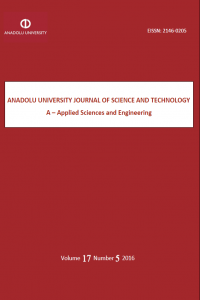Öz
Microstructural and phase analyses
of corroded frit furnace refractories forming the side walls and the bottom of
an industrial frit furnace is reported in this study. Reflected light optical
microscopy, scanning electron microscopy, energy dispersive spectroscopy, and
x-ray diffraction tools were used for the analyses. The microstructural analysis
in combination with the saturation solubilities information in the phase
diagrams was used to predict the corrosion behavior of the refractories. The
frit and the refractory types were compared qualitatively for the dissolution
potential and corrosion mechanisms. The dissolution of the refractory material
was direct (congruent) for both the side wall refractories and bottom pavers.
The first push exudation phenomenon was determined to be effective for the
increase of porosity and pore dimensions which in turn caused accelerated wear
rates when combined with corrosion. The corrosive potential of the transparent
frit for corundum, mullite, and glassy phase in the refractories was determined
to be excessive. The dissolution of these species in the molten transparent
frit was predicted to start at temperatures between 1000-1340oC
while the operating temperature was 1470oC. The decrease in the extent
of corrosion by zirconia inclusion either in the refractories or in the molten
glass compositions was qualitatively discussed.
Ayrıntılar
| Konular | Mühendislik |
|---|---|
| Bölüm | Araştırma Makalesi |
| Yazarlar | |
| Yayımlanma Tarihi | 18 Aralık 2016 |
| Yayımlandığı Sayı | Yıl 2016 Cilt: 17 Sayı: 5 |


